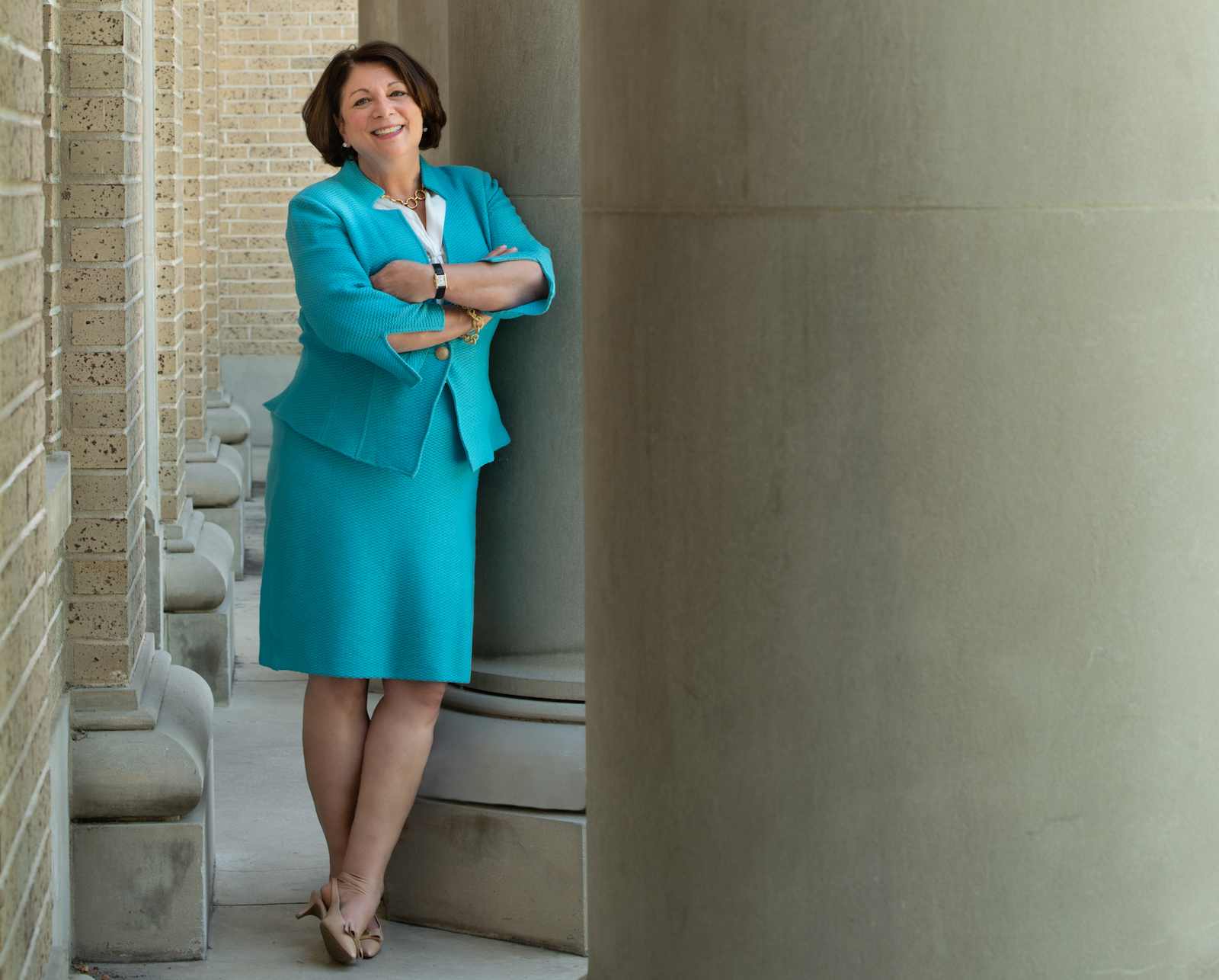The Local newsletter is your free, daily guide to life in Colorado. For locals, by locals.
Joyce McConnell loves a good thrill.
At one point in her four-year tenure as provost at West Virginia University, which followed 19 years as a professor and eventually dean of the school’s law program, McConnell climbed to the top of a rappelling tower above some 40,000 kids at the National Boy Scout Jamboree two-and-a-half hours from WVU’s campus. As she harnessed in, she was instructed by the trainer to hold onto the spool as she descended to slowly let herself down. She excitedly jumped off the platform, but in the process forgot to keep her hands in place and rapidly spun downward, turning completely upside down. There’s a video of the entire ordeal, she says, and in the background, a fellow administrator can be heard shifting from encouragement to exasperation as the university’s chief academic officer plunged headfirst from the tower.

While the incident wasn’t intentional, McConnell says its with this same enthusiasm that she’s approaching her the most high-profile role of her career. As the newly minted president of Colorado State University, McConnell is tasked with leading a rapidly expanding university 1,500 miles from the Appalachians during arguably the most tumultuous time for higher education in Colorado’s history. Where is CSU headed from here? 5280 sat down with McConnell to find out.
5280: What ultimately attracted you to Colorado State?
McConnell: I wanted to be at a land-grant [university]. I wanted to be at a place that really made a difference for the state. I wanted to be at a place with a loyal alumni base. One of the great joys of coming here is that all of that is actually true.
How do you balance the need to attract out-of-state students with the land-grant mission, especially when as recently as 2017, Colorado ranked fourth-to-last in higher education spending per student?
Higher education throughout the country is being disrupted by the significant change in business model, essentially, for higher education. The challenge for land-grants is to always focus on affordability, while at the same time providing the highest-quality education and research. We never want to see the quality of education get compromised because of a lack of funding. But I think we have to have more conversations with the state legislature about what they believe is important to invest in for Colorado residents. Colorado students need CSU; they absolutely need an institution like this.
One of the major conversations around higher education here in Colorado and nationally is the student debt crisis. CSU has one of the lowest student debt numbers of any school in the state (roughly $26,000), but that can still be a serious financial burden. What has to be done to prevent students and families from being scared off by that number?
What I always try to explain to parents is that, even though it’s a lot of money—and I don’t want to diminish how significant that is—it’s about equivalent to a new car. I really do think it’s important for not only the families to look at that as an investment, but states and the federal government should look at it as an investment, too. Because the jobs that are actually being created are the jobs that need that knowledge and those skills. But we have to decrease that debt burden because we’ve already seen it recently, that if you graduate with large debt, then you yourself are not able to launch as your parents were able to launch. And so it makes it harder to buy a home, for example. So those kinds of issues have a ripple effect on the economy.
You have the unique privilege and challenge of replacing Tony Frank, who is now the chancellor of the entire CSU System. What can you take from what Tony did in his time as president, and what do you specifically want to make your mark on?
When you come in as a new president, you look around and say, ‘Well, why did they make that decision?’And I can just pick up the phone and call Tony when I want to know those things. Tony, having been at CSU for so long, really was able to take advantage of his experience because he was able to look at all the things that needed to be done and focus on those things. One of the things I’ve talked about is we really need to elevate CSU on a state, national, and international level. We need people to understand the pathbreaking work that’s being done here. We want people, when they hear the name CSU, to think about not only the fact that we have one of the best atmospheric science programs in the country, but that we have two Guggenheim poets. We want to be able to tell people about all of the things that are happening here.
You mentioned your sense of adventure; what does a university president do in her free time?
I love the outdoors, so Colorado has been perfect. Just this last weekend, I took a random trip up the Big Thompson Canyon to Estes Park. But, you know, being a naive newcomer, I didn’t realize how busy it was going to be. So I’ll have to go another time when there aren’t so many other people there. But I love hiking for wild flowers. I have this huge collection of wild flower photographs from across the country, and I love art. So much of my work life is very linear and scheduled, so all of those things give me a release from that. And Colorado has all of them.








